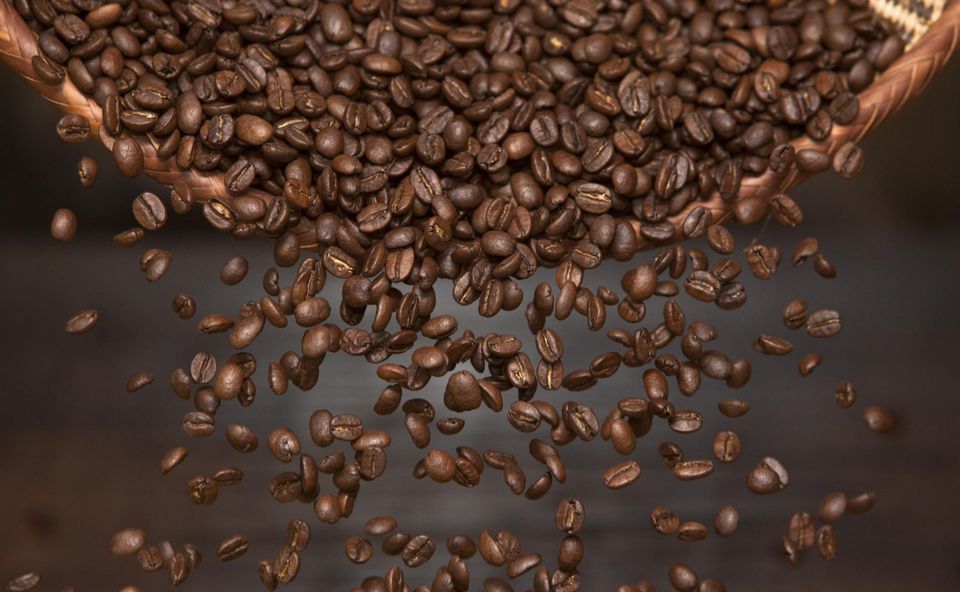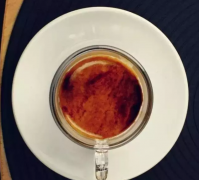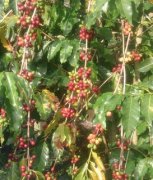What are the seven factors that affect the aroma of coffee?

Professional coffee knowledge exchange more coffee bean information please follow the coffee workshop (Wechat official account cafe_style)
What is the meaning of wet and dry aroma of coffee? seven factors affecting the flavor and aroma of raw beans of coffee
60% of a good cup of coffee depends on the quality of raw beans. As a coffee practitioner, we should open up the pattern and learn more about the whole link of "From Seed To Cup" as much as possible. This is helpful to the link you are engaged in. After all, bakers bake according to beans, while baristas brew through beans and baking ideas. We know that scientists have extracted thousands of aromatic substances from raw coffee beans, and different coffees have different flavors and aromas. So what are the reasons that determine the difference in coffee?
I. different places of origin
Different producing areas will have different temperature, rainfall, sunshine, humidity and soil composition. So even the same variety of coffee will be cultivated in different environments with different flavors and aromas. For example, the rose summer in Ethiopia is different from that in Panama, because coffee trees produce fruits with different flavors depending on the growth environment. Generally speaking, African beans taste bright and cheerful, and the flavor in the mouth is changeable and lively; Central and South American beans are enthusiastic and unrestrained, with only a mouthful of all the flavors coming; Asian beans are relatively conservative and need to be extracted at high temperature for a long time. Figure it out slowly. I have to say, beans are like people.
Second, different varieties
Different places of production, even different estates, the varieties of coffee will be different, so the cultivated varieties of coffee are also very diverse, of course, the taste and aroma of coffee are also varied. There are thousands of coffee tree species all over the world, and the more common species are as follows:
Iron card species (Typica):
Have superior aroma and mild sour taste
Bourbon species (Bourbon)
The thickness, aroma and sweetness of the concentrated alcohol are very bright.
Kaddura species (Caturra):
Refreshing sour fruit, light sweetness.
Kadimo species (Catimor):
Bitter taste, dark chocolate aroma.
Canefra (Canefora):
Can also become Robusta, taste single, mugi-cha fragrance.
Third, different treatment methods
Coffee berries are processed after picking. Typical treatment methods are as follows:
One-day sun treatment (Natural)
2 washing method (Washed)
3 semi-washing method (Semi-washed)
4 Natural removal of pectin (Pulped Natural)
Red Honey (Red Honey)
-- Yellow Honey
Black Honey (Black Honey)
Whos-on-first-2
Sweet & mellow thickness:
Sun exposure > natural pectin removal > semi-washing > water washing
Acidity & aroma:
Washing with water > semi-washing > natural removal of pectin > solarization
Solarization is the oldest treatment method, which is not only time-consuming, but also easy to produce defective beans. The water washing method is to make up for the defects of the sun method and was born. The washing method saves time, reduces the occurrence rate of defective beans, and then controls the quality of coffee. However, the flavor and alcohol thickness of coffee processed by washing method are not as good as those processed by tanning method. As a result, people invented the honey treatment, that is, the natural removal of pectin, that is, the peel was removed and the pulp was preserved for drying.
Fourth, planting at different elevations
For high-quality coffee growers, in order to be similar to the acidity of fruit and have deep dry aroma of coffee, it is found that the area suitable for growing fine coffee is the plateau with an altitude of about 1500 meters to 2000 meters above sea level. Because there is a large temperature difference between day and night, the amount of oxygen absorbed by plants increases and the coffee fruit shrinks more frequently. But there are exceptions to this fact. In the Kona region of Hawaii, coffee beans are grown at an altitude of about 700Murray 1100 meters above sea level, because Hawaii has a unique island climate, excellent sun conditions, and usually modern facilities. Farmers are so rich that they all have feelings and integrity.
High altitude:
Over 1400 m-SHB (Strictly Hard Bean) / SHG (Strictly High Grown)
1200m HB 1400m-HB (Hard Bean) / HG (High Grown)
Mid-altitude area:
600MUR 900m-PW (Prime Washed)
Low altitude areas:
Below 600m-GW (Good Washed)
Fifth, regional coffee grade standards are different
Coffee grades from different places also have different classification criteria. Basically, there are four criteria for scoring raw coffee beans:
1. Planting altitude
2. Size of raw beans (sieve size Screen size)
3. Coffee bean flavor
4. Proportion of defective beans
But different countries have different benchmarks. In Brazil, for example, the criteria for taste are as follows (from high price to low price):
Strictly Soft > Soft > Softish > Hard > Hardish > Rioy > Rio
There are about four kinds of defective beans in coffee:
Over-fermented beans: spicy, astringent, sour and bitter.
Black beans: smelly and bitter.
Worm-eaten beans: smelly feet, rotting corpses.
Moldy beans: mildew, rot, bitterness.
6. The new and old degrees of raw beans are different
With the same kinds of beans, manors, elevations and planting methods, there is a great difference between new raw beans and old beans in dry and wet fragrance. Because coffee is also a kind of crop, freshness is very important for coffee.
The change of freshness of raw beans is as follows: new season beans > overgrown beans > old beans > aged beans.
Newly produced seasonal beans:
Raw beans harvested within a year
Overyielding seasonal beans:
More than one year
Lao Dou:
More than two years
Chen Niandou:
Ripe raw beans.
In terms of water content, the processed raw beans contain about 13% water. The longer the storage time is, the more moisture will be lost. For example, after a year at room temperature, the water content of raw beans will drop to less than 10%. The color of the freshly processed raw beans is blue-green / green, but as time goes on, the color of raw beans will gradually change to light green, white or yellow. And with the extension of raw frying, the aroma of raw beans will change from grass and spice to hay or rice, and for a longer time, it will be completely tasteless.
7. Different ways of preservation
No matter how good the quality of raw beans is, they will vary according to different preservation methods and facilities. The ideal thing is to maintain an indoor temperature of 15 Murray 18 degrees Celsius and indoor humidity of 50% Murray 60%. The wrong way of preservation will affect the flavor and aroma of beans, and even deteriorate. It often causes raw beans to fade and whiten and become wet and soft.
White or yellow raw beans:
Because the temperature of the storage place is too high, or too dry, the moisture of raw beans will be sucked away by air.
Raw beans with a moist surface:
The humidity of the storage place is too high, the rainy season. If the condition is serious, mold will appear on the surface of the beans.
Reference:
Tian Guangshou: a complete Collection of Red Bean
"COFFEE: A Comprehensive Guide to the Bean, the Beverage, and the Industry" by Robert W. Thurston, Jonathan Morries, and Shawn Steiman.
"Coffee: A Dark History" by Antony Wild
Http://scaa.org/specialtychronicles
Http://dailycoffeenews.com
Http://sprudge.com
Http://sprudge.com
.
Important Notice :
前街咖啡 FrontStreet Coffee has moved to new addredd:
FrontStreet Coffee Address: 315,Donghua East Road,GuangZhou
Tel:020 38364473
- Prev

Why does coffee smell so good? How many aromas of coffee? How did it come about?
Professional coffee knowledge exchange more coffee bean information please follow the coffee workshop (Wechat official account cafe_style) what is the meaning of the wet and dry aroma of coffee seven factors affecting the flavor and aroma of raw coffee in 1821, a few days before Napoleon died on St. Helena Island, his attendant Marshal Bertrand wrote about Napoleon begging: he had asked for twenty times in the morning.
- Next

The main components and aroma sources of coffee beans how many kinds of aroma of coffee and how to describe it?
Professional coffee knowledge exchange more coffee bean information Please pay attention to the meaning of wet and dry aroma of coffee in coffee workshop (Wechat official account cafe_style) Seven factors affecting the flavor and aroma of coffee raw beans 1. During baking, part of the sucrose, the main ingredient, will be decomposed into acetic acid, formic acid, glycolic acid and lactic acid, while the other part of the sucrose will undergo caramelization.
Related
- Beginners will see the "Coffee pull flower" guide!
- What is the difference between ice blog purified milk and ordinary milk coffee?
- Why is the Philippines the largest producer of crops in Liberia?
- For coffee extraction, should the fine powder be retained?
- How does extracted espresso fill pressed powder? How much strength does it take to press the powder?
- How to make jasmine cold extract coffee? Is the jasmine + latte good?
- Will this little toy really make the coffee taste better? How does Lily Drip affect coffee extraction?
- Will the action of slapping the filter cup also affect coffee extraction?
- What's the difference between powder-to-water ratio and powder-to-liquid ratio?
- What is the Ethiopian local species? What does it have to do with Heirloom native species?

